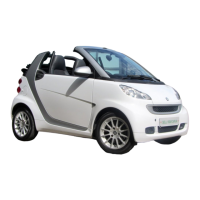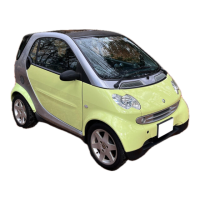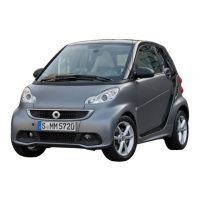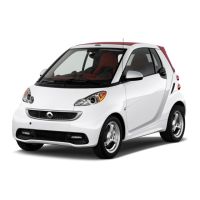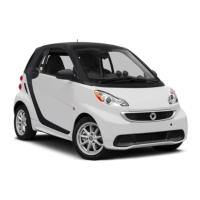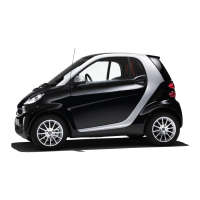Pets in the vehicle
G
WARNING
If you leave animals unsupervised or
unsecured in the vehicle, they may press
buttons or switches, for instance.
In this way, animals may:
R
activate vehicle equipment and become
trapped, for example
R
switch systems on or off and thereby
endanger other road users
Furthermore, unsecured animals may be
flung around inside the vehicle in the
event of an accident or abrupt steering or
braking manoeuvre, and thereby injure
vehicle occupants. There is a risk of acci-
dent and injury.
Never leave animals unattended in the
vehicle.
Always secure animals properly when
driving, for instance with a suitable pet
carrier.
Driving safely
Driving safety system limitations
!
Make sure you have suitable tyres, so
that assistance systems and driving
safety systems can work as effectively as
possible.
If you fail to adapt your driving style or if you
are inattentive, the driving safety systems
can neither reduce the risk of accident nor
override the laws of physics. Driving safety
systems are merely aids designed to assist
driving. You are responsible for the distance
to the vehicle in front, for vehicle speed and
for braking in good time. Always adapt your
driving style to suit the prevailing road,
weather and traffic conditions and maintain
a safe distance from the vehicle in front.
Drive carefully.
For safety reasons, smart recommends that
you only use snow chains that have been
specially approved for your vehicle by smart.
Further information can be obtained at a
smart centre or a qualified specialist work-
shop.
Braking with ABS (Anti-lock Braking
System)
ABS regulates brake pressure in such a way
that the wheels do not lock when you brake.
This allows you to continue steering the
vehicle when braking.
When you switch on the ignition, the !
warning lamp in the instrument cluster
lights up. It goes out after the engine is star-
ted.
ABS works from a speed of about 6 km/h,
regardless of road-surface conditions. ABS
intervenes in the case of slippery road sur-
faces, even when you only brake gently.
X
To brake while ABS intervenes: continue to
depress the brake pedal with force until
the braking situation is over.
X
To make a full brake application: depress
the brake pedal with full force.
G
WARNING
If ABS is faulty, the wheels could lock when
braking. The steerability and braking
characteristics may be severely impaired.
Additionally, further driving safety sys-
tems are deactivated. There is an increased
danger of skidding and accidents.
Drive on carefully. Have ABS checked
immediately at a qualified specialist
workshop.
Using Active Brake Assist
Useful information
With the help of the radar sensor system,
Active Brake Assist can calculate the dis-
tance of your vehicle to the vehicle travelling
in front.
If for several seconds, the distance to the
vehicle ahead is insufficient for the speed
you are driving at, Active Brake Assist alerts
the driver visually.
If a risk of collision is detected, Active Brake
Assist alerts the driver both visually and
acoustically. In addition, Active Brake Assist
Driving safely
51
>> Safety.
Z

